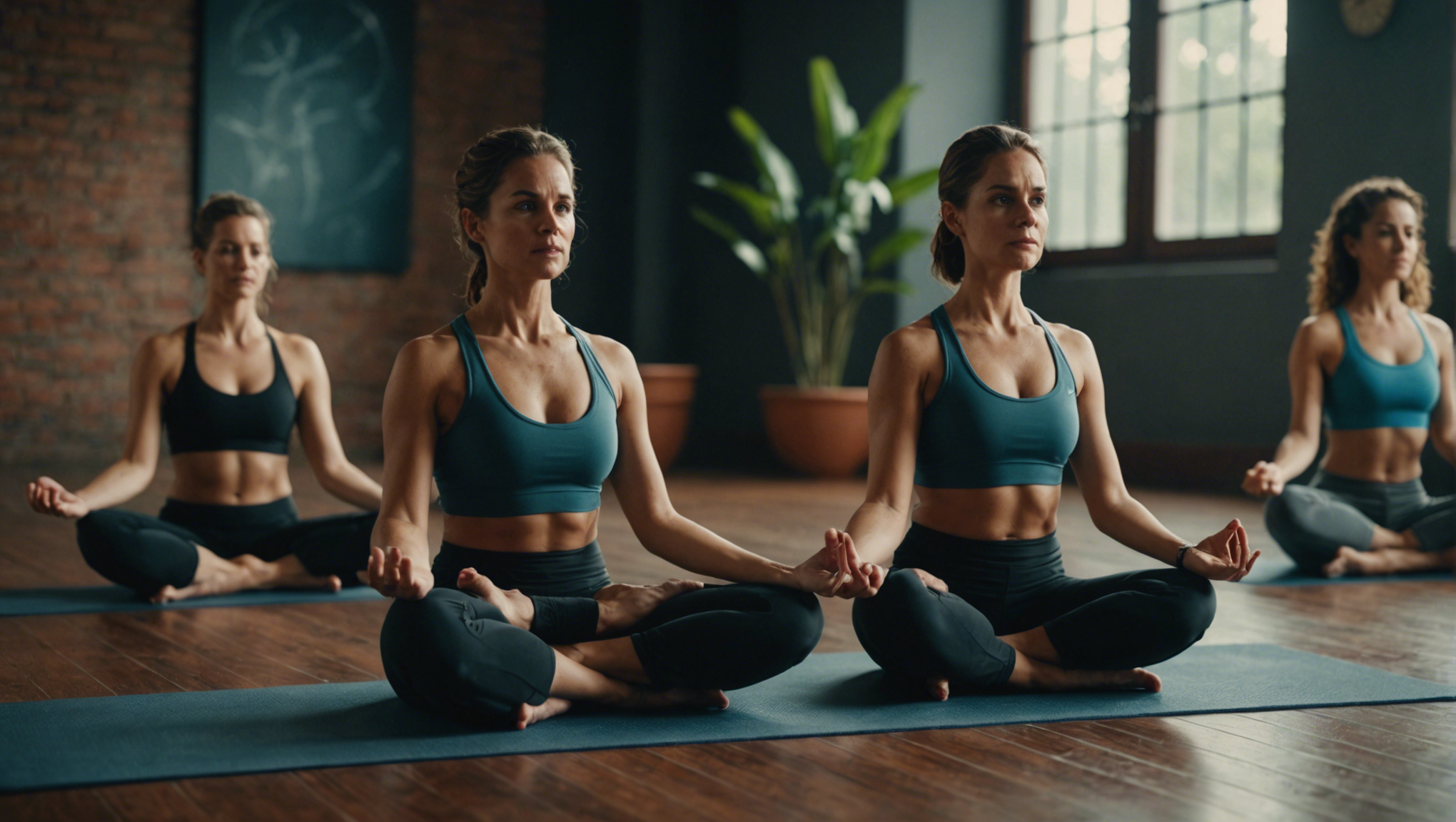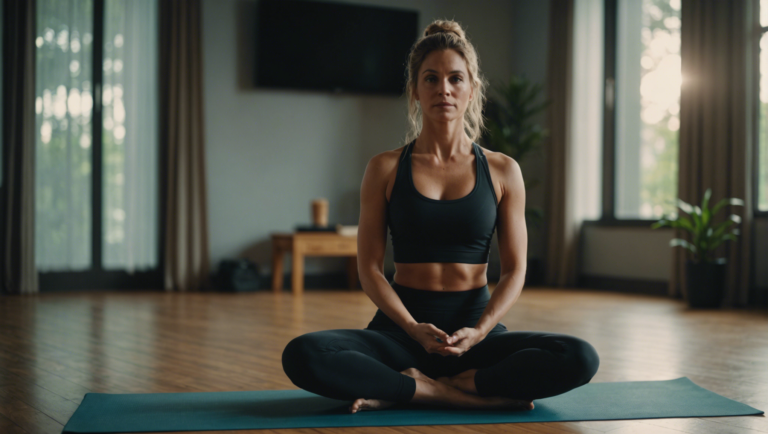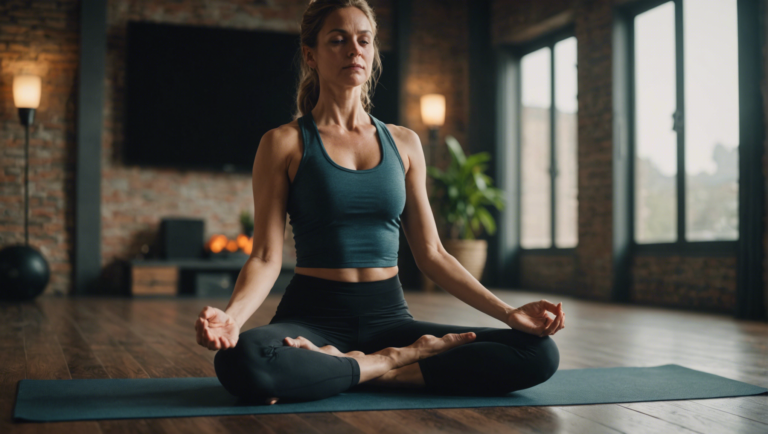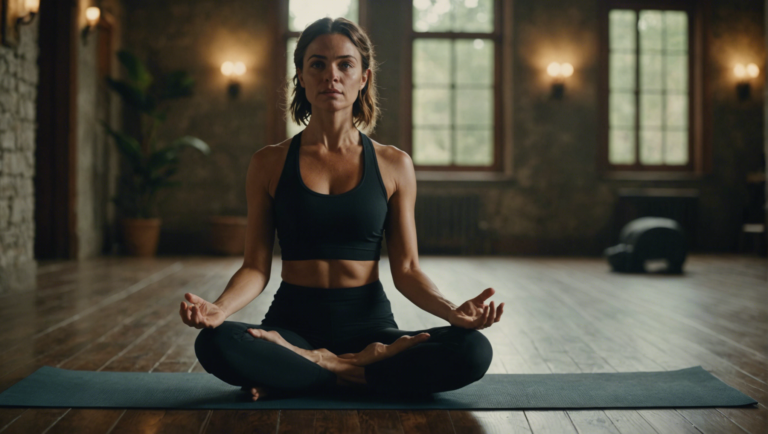Individuals Who Should Refrain From Practicing Yoga Exercises
Identifying Individuals Who Should Refrain from Practicing Yoga Exercises
Yoga, celebrated for its physical and mental health benefits, appears suitable for everyone at a glance. However, specific conditions and health contexts suggest otherwise, where the practice might do more harm than good. The wisdom behind yoga is its adaptability and inclusivity, yet recognizing when to pause or modify is crucial for certain individuals. Notably, the guidance of a qualified healthcare provider is vital before embarking on or continuing with yoga exercises if one falls within these mentioned categories.
Understanding the Exceptions
A misconception persists that yoga, being a gentle form of exercise, is universally appropriate. However, certain medical conditions and physical limitations necessitate a cautious approach. It’s not about exclusion but about ensuring safety and health are not compromised. The spectrum ranges from temporary health states to more permanent conditions that require special consideration.
Evaluating Physical Limitations
People with severe forms of osteoporosis or a heightened risk of fractures should approach yoga with caution. The emphasis on balance and weight-bearing poses could pose a risk to fragile bones. Similarly, individuals recovering from surgery, especially on weight-bearing joints like the hips or knees, might find certain yoga poses challenging or detrimental to their recovery process.
Navigating through Chronic Conditions
While yoga can be beneficial for chronic conditions by enhancing flexibility and reducing stress, those with certain ailments need to tread carefully. For instance, individuals with advanced forms of rheumatoid arthritis may find that yoga exacerbates their pain, particularly during flare-ups. Those with neurological conditions, such as advanced Parkinson’s disease or multiple sclerosis, might encounter difficulties with balance, coordination, and fatigue, necessitating modifications to standard yoga practices.
Acknowledging Pregnancy-Related Precautions
Pregnancy introduces a unique set of considerations. While prenatal yoga is immensely beneficial, it’s crucial for pregnant individuals to avoid certain poses that might put undue stress on the abdomen or potentially compromise blood flow. Specialized prenatal classes are advisable, focusing on poses that accommodate the changing body and enhance comfort during pregnancy.
Understanding Heart Health Parameters
Individuals with heart conditions, including uncontrolled high blood pressure or a history of heart attacks, should opt for gentle yoga practices under professional supervision. Vigorous yoga styles could inadvertently increase heart strain. It’s essential to monitor one’s body and heart’s response to yoga and adjust accordingly.
Assessing the Impact on Eye Conditions
Yoga practitioners with glaucoma or retinal issues should be wary of poses that significantly elevate head pressure, such as headstands or shoulder stands. These positions can increase intraocular pressure, potentially exacerbating eye conditions. Opting for poses that maintain a neutral head position can help mitigate risks.
Embracing Adjustments and Alternatives
The journey of yoga is personal and adaptable. For those with conditions that may limit their participation in traditional yoga practices, exploring alternatives or modifications is key. Consulting with healthcare providers and certified yoga instructors can pave the way for a customized yoga experience, ensuring safety and health benefits are aligned.
Engaging with Yoga Mindfully
Ultimately, yoga is about union: the body with the mind and breath. It fosters an inward journey of mindfulness and relaxation. For those advised to refrain from certain exercises, this doesn’t spell a full stop on their yoga journey; rather, it’s an invitation to explore yoga’s versatile landscape mindfully. The essence of yoga transcends physical poses, thriving in the breathwork and meditation practices that are accessible to all.
Engaging with yoga requires a mindful acknowledgment of one’s individual health conditions and limitations. By doing so, yoga remains an inclusive practice, offering its myriad benefits within the parameters of safety and personal well-being. Always remember, the core of yoga lies not in achieving the perfect pose but in harmonizing the body, mind, and spirit within one’s unique capabilities.
Understanding the Health Conditions That Limit Yoga Participation
The Intersection of Yoga and Certain Health Conditions
Yoga, with its origins steeped in ancient tradition, has surged in popularity as a preferred method for enhancing flexibility, strength, mental clarity, and overall wellness. Its adaptability to various skill levels and needs has made it an inclusively appealing practice. However, despite its wide application, there are particular health conditions that necessitate caution or outright avoidance of certain yoga exercises. Understanding these limitations is crucial for maintaining health and safety during practice.
Navigating Yoga with Cardiovascular Issues
Individuals navigating the complexities of cardiovascular health may find that not all yoga postures or practices align with their medical needs. Specifically, poses that significantly elevate the heart rate or involve prolonged inversion (where the heart is above the head) might not be suitable for those with heart disease, high blood pressure, or a history of stroke. Such conditions require a tailored approach to yoga, emphasizing gentle, restorative poses and the avoidance of rigorous Vinyasa or Ashtanga styles.
Yoga and Severe Osteoporosis: A Delicate Balance
Severe osteoporosis presents a distinct challenge in practicing yoga safely. The emphasis on weight-bearing poses, which can enhance bone density for many, might pose a risk of fractures for those with already weakened bones. It’s vital that individuals with severe osteoporosis engage in yoga under the guidance of a healthcare provider and an experienced yoga instructor who can modify poses and suggest suitable alternatives.
Considering Yoga with Eye Conditions Like Glaucoma
Yoga’s impact extends beyond muscular and cardiovascular systems; it also touches on ocular health. For those with glaucoma or other eye conditions that result in increased intraocular pressure, certain yoga positions, especially those involving inversions, might exacerbate symptoms. Opting for yoga practices that maintain a stable head position relative to the body can mitigate risks associated with these conditions.
Pregnancy and Yoga: A Special Consideration
Pregnancy introduces a time of profound physical and hormonal changes, necessitating modifications to traditional yoga practices. While yoga can be beneficial during pregnancy, offering stress relief and enhancing flexibility, specific poses should be avoided, especially after the first trimester. Twists, intense backbends, and any pose that puts pressure on the abdomen are contraindicated. Prenatal yoga classes are specifically designed to navigate these limitations, ensuring safety and comfort for expectant mothers.
Approach to Yoga with High-Risk Hernias
For individuals diagnosed with high-risk hernias, yoga can present certain hazards. Poses that involve straining or significant abdominal pressure can exacerbate hernias, leading to further complications. This calls for a cautious approach or a temporary cessation of yoga practices focusing on core engagement until medical clearance is obtained.
Tailoring Yoga for Chronic Back Pain
Chronic back pain sufferers must approach yoga with a discerning eye, as certain poses can aggravate their condition. While yoga can offer relief through gentle stretching and strengthening exercises, it’s crucial to avoid extreme backbends, twists, and forward folds without proper support and guidance. Consulting with a physical therapist or a yoga instructor knowledgeable about spinal issues can help tailor a yoga routine that contributes to back health rather than detracting from it.
Engaging in Yoga with Respiratory Conditions
Yoga’s breathing exercises and meditative practices can offer profound benefits for those with respiratory conditions like asthma. However, caution must be exercised in physically demanding practices that could strain breathing. Avoiding high-intensity sequences and opting for a gentle, paced approach under the supervision of an instructor familiar with respiratory sensitivities is advisable.
In understanding the intersection of specific health conditions with the practice of yoga, it’s evident that while yoga offers extensive benefits, it’s not a one-size-fits-all remedy. Tailoring the practice to individual health needs and limitations is paramount for ensuring the safety and efficacy of yoga as a component of holistic well-being. Engaging with healthcare providers and qualified yoga instructors can navigate these limitations, offering personalized modifications that maintain the integrity of yoga’s benefits while addressing individual health concerns.
The Impact of Acute Injuries on Yoga Practice Eligibility
Embarking on a yoga journey offers a multitude of benefits, from sharpening mental clarity to enhancing physical agility. However, when navigating the path of yoga, it’s essential to consider the impact of acute injuries on one’s ability to participate in these practices safely. Recognizing and understanding the boundaries set by physical injuries are crucial to not only safeguarding one’s health but also in harnessing the true essence of yoga—a practice that seeks harmony between body and mind.
Recognizing the Red Flags: Yoga and Acute Injuries
Before delving into any yoga routine, recognizing the red flags that acute injuries might present is paramount. Acute injuries, characterized by sudden pain, swelling, or inability to bear weight, can significantly deter your yoga journey. Engaging in yoga exercises without addressing these injuries, or failing to modify practices accordingly, can exacerbate the condition, leading to prolonged recovery periods or even chronic issues. Thus, acknowledging the limitations imposed by acute injuries is the first step toward a healing and beneficial yoga practice.
Navigating Yoga with Acute Injuries: Tips and Modifications
Forging ahead with yoga post-acute injury requires mindful modifications and occasionally, the guidance of healthcare professionals or experienced yoga instructors. The emphasis should shift from rigorous poses to gentle stretches that do not strain the injured area. Techniques such as restorative yoga, which focuses on relaxation and healing through supportive postures, can be particularly beneficial. Additionally, incorporating props like blocks and straps can help in maintaining alignment and reducing strain, facilitating a safer yoga experience.
The Role of Professional Guidance in Yoga Post-Injury
Seeking the advice of medical professionals and certified yoga instructors can greatly enhance the yoga experience post-injury. Healthcare providers can offer insights into the nature of the injury and recommend appropriate timelines for resuming or initiating yoga practices. Likewise, yoga professionals with a background in therapeutic yoga can tailor practices to suit individual needs, ensuring that the journey back to wellness is both effective and safe.
Understanding the Psychological Impact of Injuries on Yoga Practice
The journey through injury toward recovery is not solely physical; it encompasses a significant psychological element as well. The frustration and eagerness to return to regular practice can sometimes cloud judgment, leading individuals to push through pain, inadvertently hindering recovery. Acknowledging the psychological hurdles and practicing patience and self-compassion becomes as important as the physical healing process. Yoga, with its intrinsic focus on mindfulness and present-moment awareness, offers a unique avenue to cultivate these qualities, even in the face of restrictions.
Prevention: The Keystone of Safe Yoga Practice Post-Injury
Prevention of further injury stands as the keystone in the arch of safe yoga practice. This encompasses a holistic approach, starting with warm-ups that prepare the body for movement, paying heed to alignment and form during poses, and listening to the body’s cues. Embracing a gradual progression in practice intensity and complexity can also play a significant role in avoiding re-injury. Furthermore, integrating strength and flexibility training outside the yoga mat can provide a solid physical foundation, contributing to both injury prevention and a deeper, more rewarding yoga practice.
Embarking on a yoga journey post-acute injury demands a nuanced approach, marked by patience, adaptability, and a keen awareness of one’s physical limitations. By recognizing the red flags that injuries pose, and navigating the path to recovery with professional guidance and mindful modifications, individuals can continue to explore the vast landscape of yoga safely and healthily. This journey, respectful of the body’s current state, does not diverge from the ultimate goal of yoga—rather, it exemplifies the practice’s core principle: harmony within and without.
Age-Related Considerations in Yoga Exercise Adoption
Understanding the Impact of Age on Yoga Practice
Yoga has transcended millennia, evolving into a rich tapestry of styles and practices that cater to individuals across the spectrum of life. Recognized for its holistic benefits, yoga offers physical, mental, and spiritual rejuvenation. However, as we age, our bodies and minds undergo transformations that necessitate adjustments in our approach to exercise, including yoga. This brings to light the vital consideration of age-related factors in adopting a yoga practice.
Tailoring Yoga to Meet the Needs of Children and Teenagers
Young bodies are naturally more flexible but lack the awareness and patience often required in yoga practices. For children and teenagers, yoga needs to be engaging and dynamic while promoting concentration and calmness. Emphasizing posture and breathing techniques adapted for their young bodies can foster a lifelong connection to wellness. However, it is crucial to avoid intense or rigorous practices that could strain their developing musculoskeletal systems.
Navigating Yoga in Young Adulthood
The prime years of physical health, young adults often seek challenging practices, such as Ashtanga or Power Yoga, which match their energy levels and flexibility. Yet, the risk of overexertion is real. Optimizing yoga practice during this life stage involves balancing intense practices with those focusing on alignment and mindfulness to prevent injuries. This is also an opportune time to instill healthy habits that can mitigate stress and lifestyle-related health issues.
Responding to the Changing Needs of Middle-Aged Practitioners
As individuals enter their 40s and 50s, the body’s flexibility, stamina, and recovery time begin to decline. yoga practices that emphasize flexibility and strength, such as Iyengar or Hatha, can be incredibly beneficial. It is also a period to incorporate more pranayama (breath control) and meditation practices to address stress management. Adjustments and modifications become key in ensuring that yoga remains a safe and beneficial activity.
Yoga for Seniors: A Path to Graceful Aging
Beyond the age of 60, yoga becomes a valuable tool for maintaining mobility, balance, and overall well-being. Gentle yoga styles, such as chair yoga or restorative yoga, are particularly suited to senior practitioners. These practices focus on maintaining joint health, enhancing circulation, and improving balance to reduce fall risk. Furthermore, the meditative aspects of yoga can play a crucial role in mental health, offering solace, connection, and a sense of community.
Safety First: Precautions and Contraindications
Regardless of age, safety should always be the priority. Individuals with specific health concerns, such as high blood pressure, spinal issues, or chronic conditions, should seek advice from healthcare providers before starting or modifying their yoga practice. Similarly, pregnant women should opt for prenatal yoga classes designed to accommodate their changing bodies and needs.
The Role of Qualified Instructors
A qualified yoga instructor can provide invaluable guidance in adjusting practices to suit age-related needs and capabilities. They can offer modifications, monitor alignment, and ensure that practices are safe and effective. Choosing an instructor with experience in teaching diverse age groups can significantly enhance the yoga experience, making it both enjoyable and beneficial for practitioners at any stage of life.
Embracing Lifelong Learning and Practice
Yoga is not just a physical exercise; it is a journey of self-discovery and wellness that transcends age barriers. By understanding and respecting the body’s evolving needs, practitioners can continue to enjoy the myriad benefits of yoga throughout their lives. This adaptability not only preserves the essence of yoga but also confirms its place as a timeless practice for health, happiness, and harmony.
In navigating the path of yoga across the different stages of life, practitioners find not just a form of exercise, but a companion that evolves with them, offering strength, flexibility, peace, and resilience. By acknowledging and adjusting to age-related considerations, the practice of yoga can continue to enrich lives, proving that it truly is a lifelong path to wellness.
Navigating Through Temporary Restrictions: When to Pause and Resume Yoga
Yoga, with its intricate poses and profound breathing techniques, has become a cornerstone for many seeking physical well-being, mental clarity, and spiritual balance. However, life’s inevitable ebbs and flows mean that there are periods when one must wisely pause their practice and others when it’s beneficial to resume. Recognizing these cycles and making informed decisions about when to halt or proceed with yoga can optimize its benefits and safeguard against potential harm.
Understanding Your Body’s Signals
Your body communicates through symptoms and sensations, signaling when to take a break from yoga. Ignoring these messages can lead to injury or exacerbate existing conditions. In the context of physical ailments such as acute injuries, it’s imperative to pause your practice. Conditions like sprains, strains, or fractures need time to heal. Similarly, those experiencing flare-ups of chronic issues, including arthritis or sciatica, should consider temporary cessation. During pregnancy, especially the first trimester, yoga poses and practices might need adjustment or postponement for the safety of both mother and child.
Listening to your body isn’t only about heeding physical discomfort. Mental and emotional states, such as extreme stress, anxiety, or exhaustion, also influence your capability to engage with yoga safely and effectively. During such times, pressing pause on your practice to seek other forms of care or rest might be more beneficial.
The Right Time to Resume Yoga
Resuming yoga after a break should be approached with thoughtfulness and care. The decision to return often relies on the resolution or management of the condition that necessitated the pause. For individuals recovering from physical injuries, the green light from a healthcare provider is crucial. They can offer guidance on when and how to safely reintegrate yoga into your routine, possibly starting with therapeutic or gentle yoga designed for recovery.
The same level of care should extend to those navigating mental or emotional challenges. A sense of renewed mental clarity, decreased stress levels, or an overall feeling of readiness could indicate it’s time to reintegrate yoga into your life. When resuming, begin slowly, honoring your body’s current state. This may mean shorter sessions or modified poses ensuring a safe and supportive return to practice.
Tailoring Your Practice to Your Current Needs
Upon deciding to resume yoga, adapting your practice to reflect your current physical and emotional state is paramount. This might involve favoring restorative or yin yoga, which emphasizes slow movements and deep stretching with a focus on relaxation. For those returning from injuries, specific therapeutic poses that target areas of concern without strain can be beneficial.
Additionally, integrating proper warm-up routines to prepare the body and incorporating mindful breathing techniques can enhance your practice’s safety and efficacy. Consulting with yoga professionals who can offer personalized guidance and adjustments based on your unique circumstances is also advisable.
Embracing a Mindful Approach to Yoga
Throughout these cycles of pausing and resuming yoga, the underlying principle should be mindfulness. By staying attuned to your body’s and mind’s needs, and adjusting accordingly, you practice a form of yoga beyond the mat—one that encompasses awareness, compassion, and self-care.
Adopting a mindful approach means acknowledging that sometimes, the most empowering yoga practice involves non-physical elements such as meditation, pranayama (breath work), or even study and reflection on yogic philosophy. These practices can sustain your connection to yoga’s essence when physical practice is not feasible.
Navigating Through Temporary Restrictions
Life’s fluctuations necessitate a flexible approach to yoga—a practice inherently adaptable and personal. Understanding when to pause due to health concerns or personal challenges, and discerning when and how to safely resume, is instrumental in fostering a sustainable and nurturing yoga journey. By listening closely to the body and mind, and responding with compassion and wisdom, practitioners can navigate the intricate dance of pausing and resuming yoga with grace and resilience.
Conclusion
Navigating the terrain of yoga exercises comes with a consideration of various physical and health parameters to ensure the well-being of practitioners. From identifying those who might need to take a step back from yoga, understanding the specific health conditions that serve as barriers, to recognizing the implications of acute injuries and age-related factors, this comprehensive exploration underscores the importance of personalized yoga journeys. Further, it delves into the nuanced guidance surrounding temporary restrictions, offering insights into the judicious pausing and resumption of yoga practices.
Delving into the specifics, the identification of individuals who might not be suited for yoga exercises at certain points in their lives hinges on a keen awareness of one’s body and its current capacity. This awareness is not intended to exclude but to foster a safer, more beneficial engagement with yoga practices. Health conditions play a pivotal role in this discernment process. Whether it’s chronic conditions that demand careful management or acute scenarios that necessitate immediate and temporary withdrawal from practices, the focus remains on protecting health while embracing the holistic benefits of yoga mindfully.
Acute injuries present a clear, immediate signal that a hiatus from yoga may be necessary. These instances not only highlight the body’s current limitations but also serve as a reminder of the fragility and resilience inherent in the human condition. Navigating these waters requires a blend of professional medical advice and self-reflection to ensure that returning to yoga is both safe and timely.
Age-related considerations introduce another layer of complexity to the discussion on yoga exercise adoption. With age, the body undergoes transformations that might limit the types of yoga practices suitable for individuals. This aspect of the conversation opens up a broader vista on the adaptability of yoga – how it can be modified and embraced at any stage of life, provided there is clear guidance and understanding of what is beneficial versus what might be harmful.
Addressing temporary restrictions head-on and understanding when to pause and resume yoga underscores a dynamic relationship with the practice. It’s a relationship characterized by respect — respect for the body’s signals, for the healing process, and for the timeless wisdom embedded in yoga that advocates for balance and harmony.
This exploration reveals a constellation of factors that guide the participation in yoga practices. It reinforces the truth that yoga, at its core, is a personal journey marked by an intimate understanding of one’s physical and health landscape. Recognizing when to step back or how to adjust one’s practice in light of health conditions, injuries, age, or temporary circumstances is not a sign of defeat but a testament to the depth of one’s commitment to practicing yoga with awareness and care.
The dialogue between personal health and yoga practice is ongoing. It evolves as individuals navigate through the various stages of their lives, encounter health challenges, and seek to maintain a harmonious balance within their bodies. This conversation is enriched by professional insights from healthcare providers and yoga experts, as well as the personal anecdotes of those who have walked the path of adjusting their yoga practice to fit their unique health profiles.
As individuals embark or continue on their yoga journeys, this multifaceted perspective offers a beacon of guidance. It does not delineate rigid boundaries but rather illuminates the path towards a yoga practice that honors the body’s current state, embraces its potential for healing and transformation, and celebrates the profound connection between movement, breath, and well-being. Through this lens, yoga emerges not just as a series of exercises but as a lifelong practice adaptable to the shifting sands of health, age, and physical capability — a practice that holds the promise of enrichment and empowerment for all who approach it with mindfulness and compassion.



